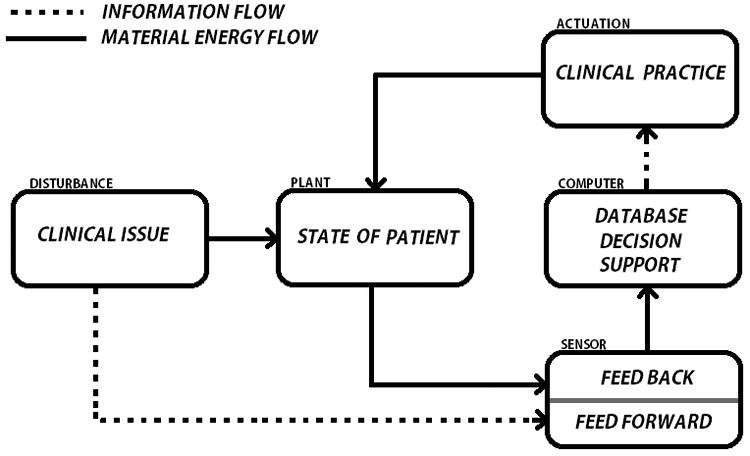Figure 1.

Control Loop depicting a Data-driven Care system. A clinical issue such as an infection or vascular occlusion affects the state of the patient. Subsequently, the system sensor detects this change and submits the relevant data to the computer for storage and analysis. This results in actuation (or not) of a clinical practice intervention that further affects the state of the patient which feedbacks into the system for further analysis. Feedforward control involves the transmission of disturbances directly to the sensor without first affecting the state of the patient. The detection of a risk factor for venous thromboembolism that triggers prophylaxis in a protocol based manner represents a clinical example of feedforward control.
